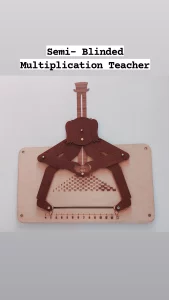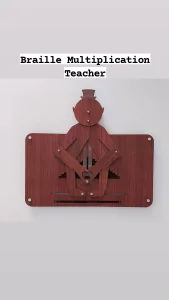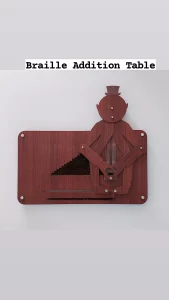Overview
Overview
Braille multiplication table is an educational resource designed to assist individuals with visual impairments in learning and practicing multiplication. This table is based on the Braille system, a tactile writing and reading system used by people who are blind or visually impaired.
Problem
One of the key issues faced by blind children with prosopagnosia is the inability to create mental associations between numbers and visual patterns, which is crucial for learning multiplication tables. Typically, sighted children rely on visual cues, such as the arrangement of numbers on a multiplication table chart, to establish patterns and facilitate memorization. Blind children, on the other hand, may struggle to form these mental connections.
Moreover, blind children may not have access to tactile or alternative educational materials that cater to their unique learning needs. Traditional methods, like flashcards or visual aids, may not be effective, leaving them at a disadvantage when trying to commit multiplication facts to memory.
Solution
Braille multiplication tables offer a multisensory and tactile-rich learning experience that addresses the unique needs of blind children, enabling them to grasp multiplication concepts more efficiently and effectively. These tools not only aid in memorization but also foster a deeper understanding of mathematics.
Braille multiplication tables serve as invaluable tools in helping blind children memorize multiplication facts more effectively. Here’s how they assist in the learning process:
Tactile Learning: Braille multiplication tables provide a tactile experience, allowing blind children to physically feel and explore the layout of numbers and their relationships. This tactile engagement helps reinforce memory through the sense of touch.
Structure and Consistency: Braille provides a consistent and organized format for representing mathematical information. The multiplication table in Braille maintains the same structure as its print counterpart, making it easier for students to identify patterns and relationships between numbers.
This science toy embodies such cultural trends by providing fun ways to learn arithmetic and by bringing mathematics into the home as well as school especially for blind kids with Braille language.
Just move his legs and he mechanically finds the answer with his hands. When you set the feet to a specific combination of numbers, seen along the bottom of the wood plate, say ‘4’ and ‘9’, the intelligent kid multiplies them together and comes up with the answer ’36’. Any combination of numbers from 1 to 12 can be multiplied together, and although you can’t point both feet to the same number, e.g. to multiply ‘5’ by ‘5’, there is a ‘square’ feature, to allow you to work out 5 squared
.




